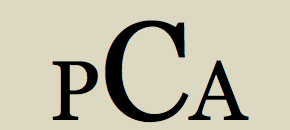Why are some properties not taxed for the Piedmont School Support Tax?
Over the last several months, PUSD has received inquiries about our collection of the School Support Tax (Measure A) that was passed with resounding support by the community in spring of ’13. In question is whether the district is applying the tax to all the appropriate properties.
Let me start by saying, the district administration and school board is appreciative of the overwhelming support we receive. The community contributes substantially to maintain our excellent schools and we are grateful for that. We do not assume it will be forever thus and we aim to earn your support at every election and with every decision. Where we fail, we hope to learn and improve.
And vigilant community members play a vital role keeping a watchful eye on our performance. It is a healthy process that we appreciate.
The parcels in question fall into four categories for potential assessment or exemption. They include; church parcels, public parcels, “minor” parcels adjacent to existing taxed parcels and parcels straddling Piedmont and Oakland.
Our law firm, Fagen, Friedman and Fulfrost has worked closely with district staff, our financial agents NBS and the County Assessor to review the parcels in question and the prevailing jurisdiction.
Having reviewed their opinions, having ourselves investigated the parcels in question and legal precedent, we are convinced of the proper performance of the parties to assess and collect the appropriate monies. It breaks down like this:
-Under the California Constitution and Revenue Code, church properties used for religious worship are exempt from property tax. While the School Support Tax is a parcel tax, it is also a property tax and therefore exempt.
-City of Piedmont properties are similarly exempt.
-With respect to “minor” parcels in Piedmont, the owners of homes including such parcels already pay the School Support Tax on their main parcel–the question is whether they should pay twice. Under Government Code Section 53087.4, parcels created under the Subdivision Map Act are treated as a single tax assessment unit and other parcels are treated as separate tax assessment units only if deeded separate from adjoining parcels. Moreover, property owners can simply combine their minor and principal parcels through the assessor’s office, as they surely would if the District attempted to tax them twice.
-There are parcels sitting astride Oakland and Piedmont. Historically, homeowners have the option to pay one or the other, and are assessed by Piedmont only if they chose to take advantage of our school system. Those parcels straddling the border with children in the PUSD schools pay our School Support Tax. One might argue that the option of sending children to Piedmont’s fine schools represents an intrinsic value to their home and should therefore be responsible for the tax. But it goes against precedent and would potentially invite litigation that the district, mindful of ongoing budget constraints, is loath to take on for the modest additional revenue it may represent.
We seek to comply with the law while avoiding potential litigation pitting us against the Piedmont residents we serve.
We hope this makes sense to the community. The Superintendent and the Board will continue to run our schools to the best of our ability with prudence and good judgment. Thank you for your ongoing interest and support in our efforts.
Douglas M. Ireland, Piedmont Unified School District Board Member
Editors’ Note: Opinions expressed are those of the author.
Read William Blackwell’s opinion here.



